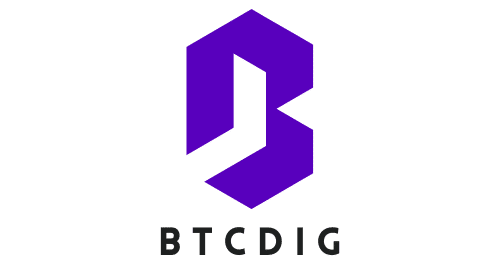What Are the Effects of High-Intensity Interval Training on Cognitive Function in Sprinters?

What if your fitness regimen could do more than just carve out a fabulous physique? Imagine if the time you spent doing burpees, lunges, or sprints could also enhance your brain power. It may sound like science fiction, but there’s a growing body of research pointing precisely in that direction.
In the era of Google scholar, PubMed and Crossref, we have access to a wealth of information that our forebearers could only dream of. Among the fascinating findings that have emerged from these studies is a link between physical activity, particularly high-intensity interval training (HIIT), and cognitive function. Whether you’re an athlete, a fitness enthusiast, or just intrigued by the potential of exercise to shape our minds as well as our bodies, this article is for you.
Cela peut vous intéresser : What’s the Optimal Macronutrient Ratio for Endurance Athletes Competing in Ironman Triathlons?
Unraveling the Nexus Between Exercise and Cognitive Health
The relationship between exercise and cognitive health is a complex one, encompassing various areas of brain functioning, from memory and attention to executive functions like problem-solving and multitasking.
Several studies have delved into this intriguing connection. A 2013 article published in the Journal of Aging Research found that regular physical activity can reduce the risk of cognitive decline in older adults. Another study published in the Journal of Clinical and Diagnostic Research in 2017 suggested that regular exercise could improve cognitive function in patients with chronic schizophrenia.
A lire aussi : What’s the Latest Research on the Biomechanics of the Perfect Golf Swing?
When it comes to high-intensity interval training, the effects are even more profound. A pilot study published in the Journal of Exercise Rehabilitation in 2018 reported that older adults who participated in HIIT showed significant improvements in cognitive function, specifically in attention and processing speed.
High-Intensity Interval Training: A Closer Look
What exactly is high-intensity interval training? Often abbreviated as HIIT, this exercise strategy alternates short periods of intense anaerobic exercise with less-intense recovery periods. Not only does HIIT burn more calories in less time than steady-state cardio, but it also has a variety of health benefits, including improved cardiovascular health, increased metabolism, and enhanced muscle tone.
A typical HIIT session might include a warm-up period, followed by several rounds of high-intensity exercise (such as sprinting or cycling at a pace that gets your heart rate up to at least 80% of your maximum), separated by medium-intensity exercise for recovery, and finally a cool-down period. Each round usually lasts between 30 seconds and a few minutes, depending on the intensity level.
The Impact of HIIT on Cognitive Function in Sprinters
Sprinters, by the nature of their sport, tend to engage in high-intensity interval training. The question is, does this type of training affect their cognitive function?
Emerging research suggests that it does. A 2019 study published in the International Journal of Sports Medicine found that sprinters who participated in HIIT showed significant improvements in cognitive function, particularly in areas of attention and executive function.
The researchers concluded that the intense physical exertion inherent in sprinting, coupled with the need for rapid decision-making and focus during the race, might explain these cognitive benefits. The study, however, also noted the need for further research to fully understand the mechanisms behind these findings.
Exploring the Underlying Mechanisms
Scientific curiosity naturally leads to the question: how does high-intensity interval training enhance cognitive function? While the exact mechanisms are still under investigation, some theories have been proposed.
One theory is that high-intensity exercise increases the release of brain-derived neurotrophic factor (BDNF), a protein that supports the survival of existing neurons and promotes the growth and differentiation of new ones. BDNF also plays a crucial role in neuroplasticity, the brain’s ability to reorganize itself by forming new neural connections.
Another theory suggests that high-intensity exercise boosts blood flow to the brain, enhancing oxygen and nutrient delivery, which in turn promotes brain health and cognitive function. Yet another theory proposes that the stress of high-intensity exercise might lead to an increased production of endorphins, neurotransmitters that can pass through the blood-brain barrier and boost mood and cognitive function.
Regardless of the specific mechanisms, the takeaway is clear: HIIT isn’t just for sculpting abs or toning glutes. It might also be a powerful tool for enhancing brain function, proving once again that the old saying ‘a healthy body houses a healthy mind’ holds a grain of truth.
While it’s evident that more research is required to fully understand the complex relationship between high-intensity interval training and cognitive function, the studies we’ve looked at provide compelling evidence of a positive correlation. But as with any exercise regimen, it’s important to approach HIIT sensibly, starting slow if you’re new to it, and always prioritizing proper form to prevent injury.
Remember that exercise is just one piece of the puzzle when it comes to brain health. A balanced diet, adequate sleep, mental stimulation, and social interaction are also key. So keep challenging your body with those high-intensity workouts, but don’t forget to exercise your mind as well.
The Link Between HIIT and Cognitive Performance in Sprinters: A Review of the Evidence
In the realm of sports science, the connection between high-intensity interval training and cognitive performance is gaining traction. Sprinters, who frequently engage in this type of training, have been the focus of several studies.
One 2019 study, published in the International Journal of Sports Medicine, was specifically aimed at investigating the impact of HIIT on cognitive function in sprinters. The results were intriguing: sprinters who participated in HIIT showed significant improvements in cognitive performance, with notable enhancements in attention and executive function.
Why might this be? The researchers attribute the positive effects to the intense exertion required by sprinting, as well as the need for rapid decision-making and focus during the sprint. The combination of physical and mental demands may contribute to the brain-boosting benefits seen in the sprinters.
But while the findings are promising, the researchers emphasize the need for further research. After all, much about the relationship between HIIT and cognitive function remains a puzzle waiting to be solved.
Conclusion: Harnessing the Power of HIIT for Brain Health
We’ve come a long way since the days when physical exercise was seen solely as a means to develop physical strength and endurance. With the help of resources like Google Scholar, Crossref, and PubMed, we’re now uncovering the profound impact that exercise – particularly high-intensity interval training – can have on our cognitive function.
So, what’s the bottom line? Based on existing research, it appears that HIIT does more than improve cardiovascular fitness and muscle tone. Evidence suggests it may also enhance cognitive performance, particularly in athletes like sprinters who engage in this type of training regularly.
However, it’s important to remember that exercise is just one part of maintaining brain health. Other elements, like a balanced diet, sufficient sleep, mental stimulation, and social interaction, are also critical. And, as with any exercise regimen, it’s crucial to take a sensible approach to HIIT. If you’re new to it, start slow and prioritize proper form to prevent injury.
Finally, always keep in mind that the link between exercise and cognitive health is a complex and multi-faceted one, with much still to be explored. The journey of discovery continues, and as it does, we can likely look forward to even more exciting insights into the remarkable benefits of high-intensity interval training on our brains.
